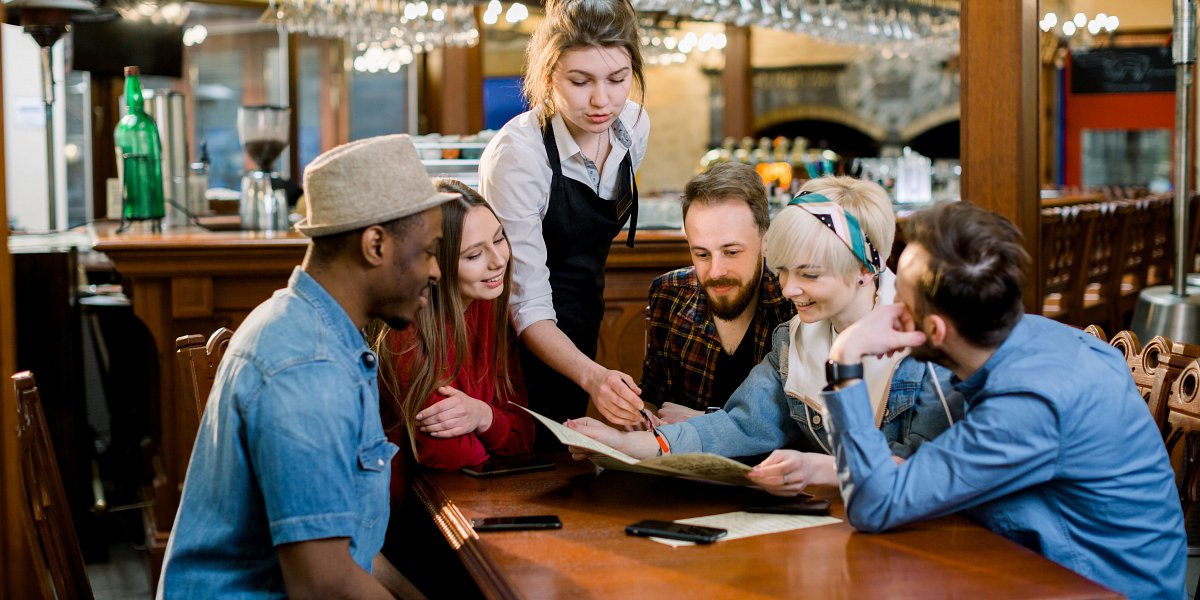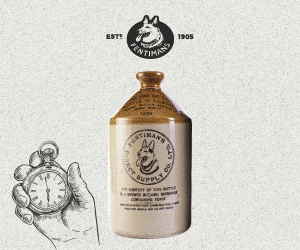Insight: Cerebral settings
Karen Fewell, director of Digital Blonde, on the psychology behind moments of joy in your café.

I have been travelling for work recently, visiting various cafés, restaurants, and hotels across the country. Two of my stops were particularly memorable; one was in London where I was so frustrated with the experience that I walked out without spending a single penny. The other was in York, where I stayed far longer than expected, spent more than planned and left feeling genuinely happier. It wasn’t the menu, the interior design or the marketing that made the difference. It was the staff.
As a consumer psychologist and marketing consultant, I'm often asked how to attract new and returning customers. Before giving advice, I visit the hospitality venue in question as a mystery guest to see the experience from a customer's perspective. Sometimes I encounter what I refer to as 'hospitality naturals', staff whose ability to effortlessly bring joy and make customers feel important is simply amazing. Sometimes the staff require a little more training, which can be a better investment of the marketing budget.
I think we all know that when customers have joyful and memorable experiences, they are more likely to return and recommend a hospitality venue to others. Joyful experiences create strong emotional connections, leading to higher customer retention and a more loyal base.
Research highlights that the pleasure derived from food is not just about taste but also involves multisensory experiences, social contexts and emotional states[i]. Creating joyful dining experiences can lead to greater customer satisfaction and loyalty, and by making joy a priority, businesses can stand out and build a strong brand reputation.
Here are five simple ways to use the psychology of joy to encourage repeat business and word-of-mouth marketing for your garden centre café.
- First impressions
It might seem obvious, but it really doesn't happen all the time, as I experienced on my travels. First impressions are crucial in the hospitality industry, as they can significantly influence a customer's overall experience and decision to return.
A study conducted at a restaurant in Tampere, Finland, found that the initial few minutes after entering can set the tone for the entire visit[ii]. Researchers observed that factors such as ambiance, cleanliness and the friendliness of staff played a vital role in forming these impressions. Guests who felt welcomed and comfortable from the moment they stepped in were more likely to have a positive dining experience overall and return in the future. This highlights the importance of staff being trained to create a warm and inviting atmosphere right from the start.
- Emotional contagion
Emotional contagion is a fascinating phenomenon where people ‘catch’ emotions from others, and it can significantly impact their dining experience. Imagine walking into a café where the staff are genuinely happy and smiling. It's infectious, you can't help but feel a little happier yourself.
A study by Howard and Gengler[iii] explored this idea through two experiments. In the first, participants interacted with ‘senders’ who displayed happy emotions. The ‘receivers’ who engaged with these cheerful senders reported feeling happier and had a more positive attitude towards the product being evaluated. The second experiment confirmed these findings, showing that seeing smiling senders was key for emotional contagion to occur.
This research highlights that when staff members are genuinely cheerful and positive, customers are likely to mirror these emotions, leading to a more enjoyable experience. A simple smile from your staff can go a long way in creating a joyful atmosphere that customers will want to return to.
- The role of surprise
During one of my café visits, I ordered a hot chocolate and was surprised to find it presented with a chocolate flake and a heart-shaped marshmallow on the side. This small, unexpected touch made me smile. Research by Loewenstein (2019) highlights how such surprises can capture attention, create memorable experiences and prompt positive emotional responses[iv]. Surprises can significantly influence our attitudes and behaviours, making us more likely to share these delightful experiences with others.
- The use of faces in food
Food presentation isn't just about making dishes look pretty; it can also create joyful experiences. Imagine being served a meal arranged to look like a smiley face. A study by Schwab, Zorjan, and Schienle (2021) found that arranging food to resemble faces can influence brain activity in adults[v].
Participants were shown images of meals plated in conventional ways and meals arranged to look like smiley or frowny faces. The researchers discovered that the smiley ones elicited stronger positive emotional responses. Think about incorporating smiley faces in your café, perhaps on a coffee, cake or biscuit.
- The peak-end rule
The peak-end rule, proposed by Daniel Kahneman, suggests that people judge an experience largely based on how they felt at its peak (i.e. its most intense point) and at its end, rather than the total sum or average of every moment of the experience[vi]. This psychological insight can significantly enhance the creation of lasting positive memories in your café.
For instance, consider a café that serves a lunch dish on a steaming skillet. The sizzling sound and the dramatic presentation create a peak moment that captures the customer’s attention and makes the meal memorable. To end the visit on a high note, you could offer a small taster or sample near the exit. Imagine customers being offered a bite-sized treat as they leave. This pleasant surprise can leave a lasting positive impression and encourage them to return.
Implementing these strategies can turn a simple meal into a joyful event, boosting customer loyalty, word-of-mouth and revenue. Want to learn more? We run a Moments of Joy workshop, which is a fun, playful session focused on enhancing customer service and adding joy to dining experiences. For details, e-mail me at [email protected].
References
[i] Batat, W., Peter, P. C., Moscato, E. M., Castro, I. A., Chan, S., Chugani, S., & Muldrow, A. (2019). The experiential pleasure of food: A savoring journey to food well-being. Journal of Business Research, 100, 392-399.
[ii] Amelia, M., & Garg, A. (2016). The first impression in a fine-dining restaurant. European Journal of Tourism, Hospitality and Recreation, 7(2), 100-111. https://doi.org/10.1515/ejthr-2016-0012
[iii] Howard, D. J., & Gengler, C. (2001). Emotional contagion effects on product attitudes. Journal of Consumer Research, 28(2), 189-201. https://doi.org/10.1086/322897
[iv] Loewenstein, J. (2019). Surprise, recipes for surprise, and social influence. Topics in Cognitive Science, 11(1), 178-193. https://doi.org/10.1111/tops.12312
[v] Schwab, D., Zorjan, S., & Schienle, A. (2021). Face the food: Food plating with facial patterns influences appetite and event-related brain potentials. Motivation and Emotion, 45, 95-102. https://doi.org/10.1007/s11031-020-09859-x
[vi] Kahneman, D. (2011). Thinking, fast and slow. Farrar, Straus and Giroux.
















